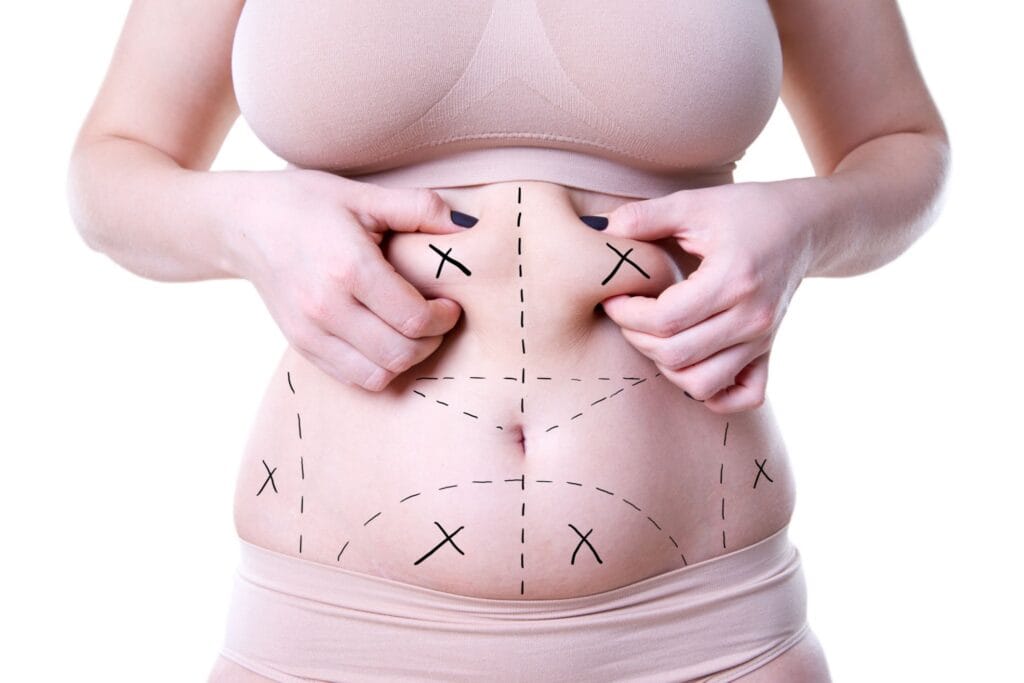Liposuction is a body contouring procedure, not a weight-loss solution. While it can remove significant fat deposits, it’s crucial to understand its limitations and realistic expectations. This article clarifies the procedure, its capabilities, and the necessary strategies for long-term weight management.
Table of Contents
Liposuction: Understanding the Procedure
Liposuction is a surgical procedure designed to remove stubborn subcutaneous fat deposits from specific areas of the body. It involves the insertion of cannulas—thin, hollow tubes—through small incisions to suction out fat cells. The procedure is typically performed under general anesthesia or local anesthesia with sedation. Multiple techniques exist, including tumescent liposuction (involving fluid injection to aid fat removal) and ultrasound-assisted liposuction (using ultrasound energy to break down fat cells).
The areas commonly treated with liposuction include the abdomen, thighs, hips, buttocks, arms, and chin. The amount of fat removed depends on various factors, including the patient’s overall health, the amount of excess fat, and the surgeon’s assessment. It’s not a one-size-fits-all approach; a thorough consultation is essential to determine suitability and realistic outcomes. Recovery time varies depending on the extent of the procedure, but generally involves some discomfort, swelling, and bruising.
Post-operative care is crucial for optimal results. This includes wearing compression garments to minimize swelling and support the skin, adhering to prescribed medication regimens, and attending follow-up appointments. Patients should expect some swelling and bruising for several weeks, with gradual improvement over several months. The final results are usually visible after several months, once the swelling has completely subsided.
Remember, liposuction is a precise sculpting tool, not a weight-loss miracle. It’s designed to refine body contours, not to replace healthy lifestyle choices. The procedure targets localized fat deposits, not overall body weight.

Weight Loss Expectations & Limitations
Losing 100 pounds through liposuction alone is unrealistic and medically inadvisable. Liposuction is intended to remove localized fat, not to address significant overall weight loss. The procedure’s primary goal is to improve body contour and definition in specific areas, not to drastically reduce body weight. Attempting to lose such a significant amount of weight through liposuction would be extremely risky and potentially dangerous.
The maximum amount of fat safely removed during a single liposuction procedure is limited to prevent complications. Removing excessive amounts of fat can lead to serious health risks, including fluid imbalances, infections, and blood clots. The procedure’s effectiveness is also dependent on the patient’s skin elasticity and overall body composition. Patients with poor skin elasticity may experience sagging skin after significant fat removal.
Furthermore, liposuction does not address underlying health issues that contribute to weight gain, such as poor diet or lack of exercise. It’s crucial to understand that liposuction is a cosmetic procedure, not a treatment for obesity. Weight loss should primarily be achieved through a combination of diet, exercise, and lifestyle changes. Liposuction can enhance the results of weight loss efforts, but it cannot replace them.
Patients considering liposuction for significant weight loss should explore alternative, medically sound approaches to weight management. These include balanced diets, regular exercise, and potentially, medical weight loss programs under the guidance of a physician.

Liposuction Candidates & Ideal Goals
Ideal candidates for liposuction are generally healthy individuals with localized fat deposits that are resistant to diet and exercise. They should have realistic expectations about the procedure’s limitations and be committed to maintaining a healthy lifestyle after surgery. A stable weight is also crucial; significant weight fluctuations before and after the procedure can negatively impact results.
Candidates should have good skin elasticity to minimize the risk of sagging skin after fat removal. A thorough medical evaluation is necessary to assess overall health and determine suitability for the procedure. Patients with certain medical conditions, such as heart disease or blood clotting disorders, may not be suitable candidates. Smoking and excessive alcohol consumption can also increase the risk of complications and are generally discouraged before and after surgery.
Ideal goals for liposuction are focused on body contouring and refinement. Patients should aim for a subtle improvement in their body shape, rather than drastic weight loss. Realistic expectations are key to a successful outcome and patient satisfaction. The surgeon will work with the patient to develop a personalized treatment plan that aligns with their individual goals and body type.
Open communication with the surgeon is essential throughout the process. Patients should feel comfortable discussing their expectations, concerns, and any questions they may have. A collaborative approach ensures that the procedure aligns with the patient’s desired outcome and minimizes potential risks.

Long-Term Weight Management Strategies
Maintaining a healthy weight after liposuction requires a commitment to long-term lifestyle changes. This includes adopting a balanced diet, engaging in regular physical activity, and maintaining a healthy lifestyle overall. These strategies are crucial for preventing weight regain and preserving the results of the procedure. A nutritionist or dietitian can provide guidance on developing a personalized meal plan that supports weight maintenance.
Regular exercise is essential for maintaining muscle tone and overall health. A combination of cardiovascular exercise and strength training is recommended. Cardiovascular exercise helps burn calories and improve cardiovascular health, while strength training helps build and maintain muscle mass. A fitness professional can help develop a personalized exercise plan that aligns with individual fitness levels and goals.
Maintaining a healthy lifestyle after liposuction also involves managing stress and prioritizing sleep. Stress can contribute to weight gain, while adequate sleep is essential for overall health and well-being. Stress-management techniques, such as yoga or meditation, can be beneficial. Prioritizing sleep ensures the body has time to repair and recover, supporting long-term health and weight management.
Long-term success after liposuction is largely dependent on the patient’s commitment to maintaining a healthy lifestyle. Regular follow-up appointments with the surgeon and other healthcare professionals can provide support and guidance throughout the process. This collaborative approach ensures the patient has the resources and support needed to achieve and maintain their desired results.
Liposuction can refine body contours, but it’s not a weight-loss solution. Realistic expectations, coupled with a commitment to long-term lifestyle changes, are crucial for achieving and maintaining optimal results. Consult a board-certified plastic surgeon to determine if liposuction is the right option for you.
Transform Your Confidence with Surgyteam!
Join the thousands of satisfied patients who have experienced the exceptional care and expertise of Surgyteam’s renowned plastic surgeons. Whether you’re seeking aesthetic enhancements or reconstructive surgery, our dedicated team in Antalya is here to provide you with the highest quality treatment and personalized care.



